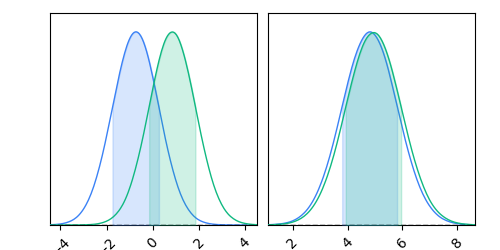Note
Click here to download the full example code
Introduction to Distributions¶
When you have a few chains and want to contrast them all with each other, you probably want a summary plot.
To show you how they work, let's make some sample data that all has the same average.
from chainconsumer import Chain, ChainConsumer, Truth, make_sample
# Here's what you might start with
df_1 = make_sample(num_dimensions=4, seed=1, randomise_mean=True)
df_2 = make_sample(num_dimensions=5, seed=2, randomise_mean=True)
print(df_1.head())
Out:
A B C D log_posterior
0 1.165687 4.567259 9.776522 14.295710 -7.959083
1 -1.672359 6.250147 9.198599 15.252295 -4.100925
2 -1.842862 5.645696 9.244599 14.286349 -4.885728
3 0.399578 3.775206 8.951355 14.615673 -2.912755
4 -0.555741 4.439733 8.699755 15.788146 -4.023341
Using distributions¶
# And now we give this to chainconsumer
c = ChainConsumer()
c.add_chain(Chain(samples=df_1, name="An Example Contour"))
fig = c.plotter.plot_distributions()

If you want the summary stats you'll need to keep it just one
chain. And if you don't want them, you can pass summarise=False
to the PlotConfig.
When you add a second chain, you'll see the summaries disappear.
c.add_chain(Chain(samples=df_2, name="Another contour!"))
c.add_truth(Truth(location={"A": 0, "B": 0}))
fig = c.plotter.plot_distributions(col_wrap=3, columns=["A", "B"])

Total running time of the script: ( 0 minutes 2.639 seconds)
Download Python source code: plot_3_distributions.py